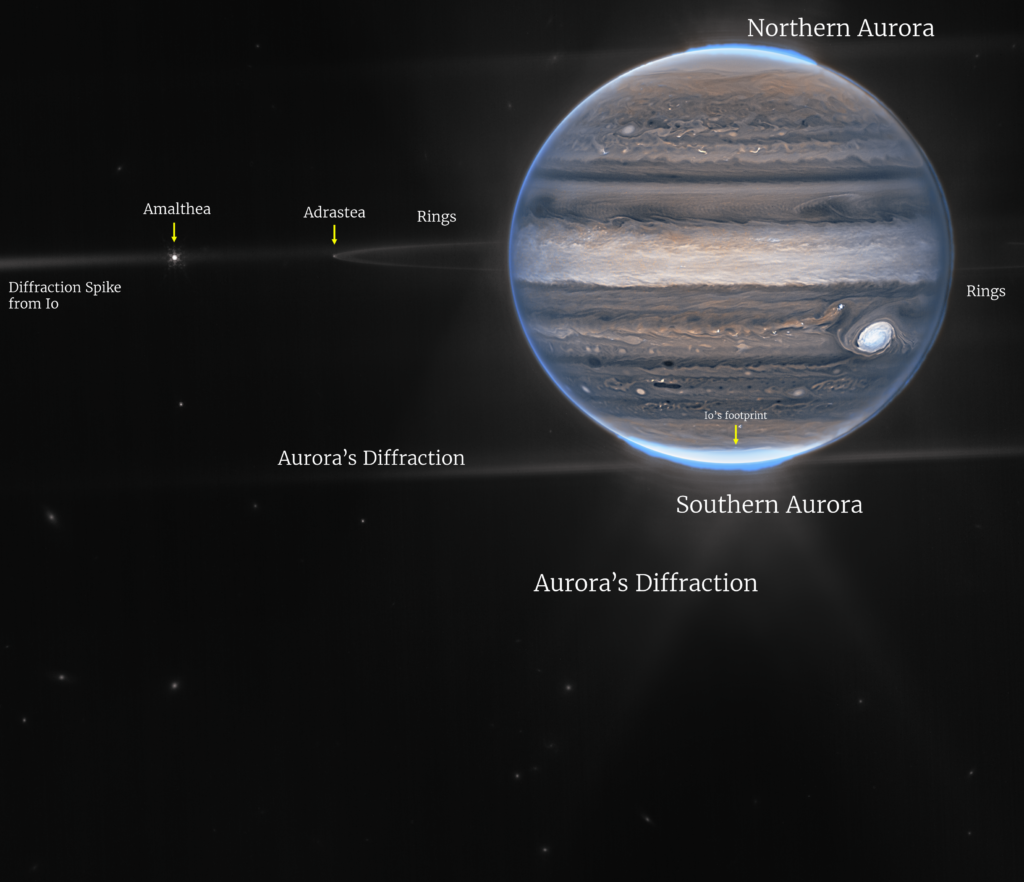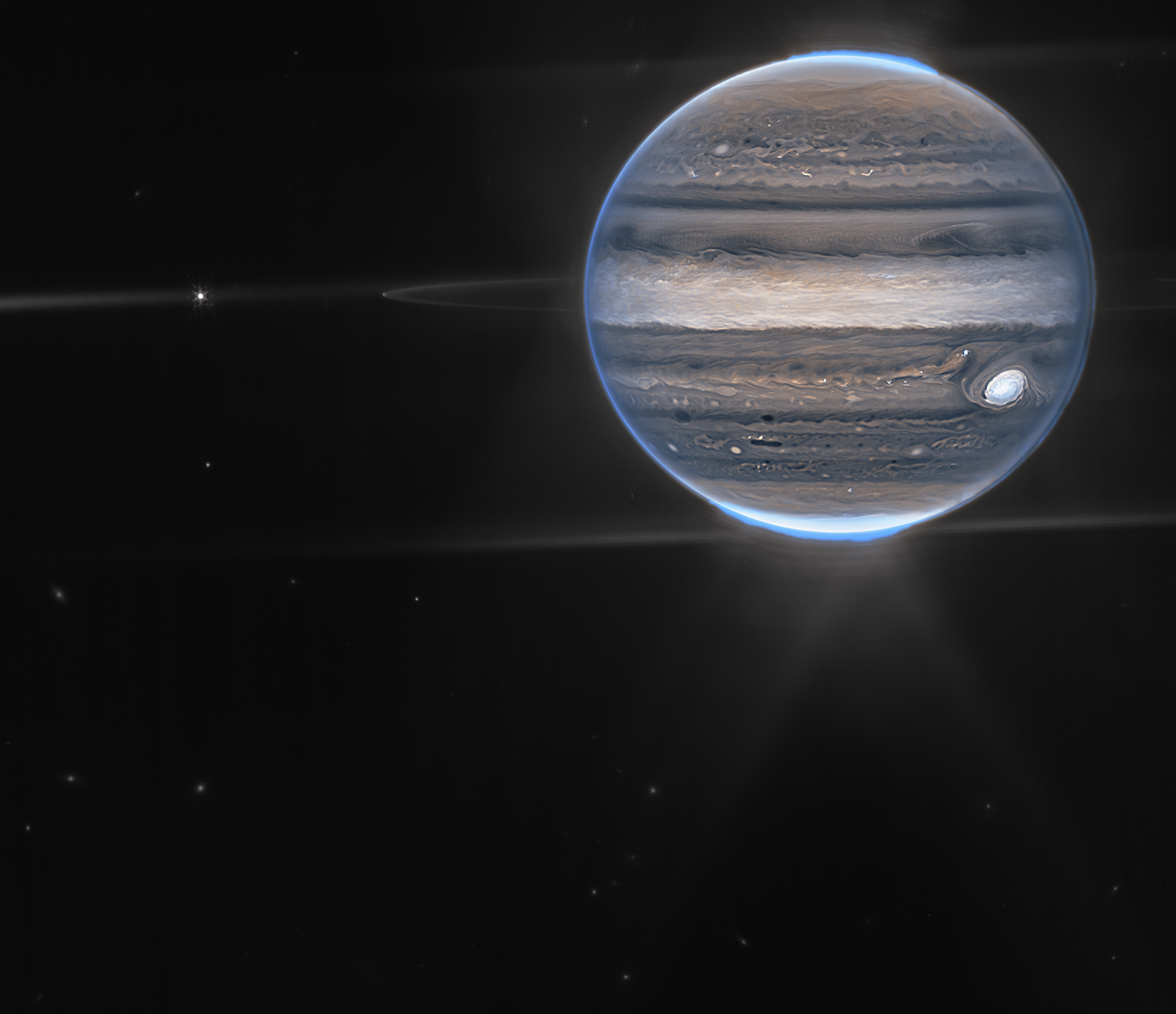Now, NASA’s James Webb Space Telescope (JWST) has captured new images which show that Jupiter has a lot going on with giant storms, powerful winds, auroras, and extreme temperature and pressure conditions. The two images come from the observatory’s Near-Infrared Camera (NIRCam), which has three specialized infrared filters that showcase details of the planet. Webb’s Jupiter observations will give scientists even more clues to Jupiter’s inner life.
Scientists collaborated with citizen scientist Judy Schmidt to translate the Webb data into images. Jupiter is actually harder to work with than more distant cosmic wonders, Schmidt says, because of how fast it rotates. Combining a stack of images into one view can be challenging when Jupiter’s distinctive features have rotated during the time that the images were taken and are no longer aligned.
In the standalone view of Jupiter, created from a composite of several images from Webb, auroras extend to high altitudes above both the northern and southern poles of Jupiter. The Great Red Spot, a famous storm so big it could swallow Earth, appears white in these views, as do other clouds, because they are reflecting a lot of sunlight. In a wide-field view, Webb sees Jupiter with its faint rings, which are a million times fainter than the planet, and two tiny moons called Amalthea and Adrastea. The fuzzy spots in the lower background are likely galaxies “photobombing” this Jovian view.
Data from telescopes like Webb doesn’t arrive on Earth neatly packaged. Instead, it contains information about the brightness of the light on Webb’s detectors. This information arrives at the Space Telescope Science Institute (STScI), Webb’s mission and science operations center, as raw data. STScI processes the data into calibrated files for scientific analysis and delivers it to the Mikulski Archive for Space Telescopes for dissemination. Scientists then translate that information into images like these during the course of their research.

Researchers have already begun analyzing Webb data to get new science results about our solar system’s largest planet. Thierry Fouchet, a professor at the Paris Observatory said “It’s really remarkable that we can see details on Jupiter together with its rings, tiny satellites, and even galaxies in one image.” “This one image sums up the science of our Jupiter system program, which studies the dynamics and chemistry of Jupiter itself, its rings, and its satellite system,” Fouchet said.
de Pater said that “Although we have seen many of these features on Jupiter before, JWST’s infrared wavelengths give us a new perspective, JWST’s combination of images and spectra at near- and mid-infrared wavelengths will allow us to study the interplay of dynamics, chemistry and temperature structure in and above the Great Red Spot and the auroral regions.”
Spectroscopic observations of Jupiter’s auroras are scheduled for later this year, while detailed spectroscopic observations of Jupiter’s Great Red Spot were taken on July 27 in the near-infrared and August 14-15 at mid-infrared wavelengths. The Great Red Spot observations are a joint project between the Early Release Science (ERS) team—with de Pater and Fouchet as co-principal investigators—and a program of Solar System observations developed by Heidi Hammel of the Association of Universities for Research in Astronomy (AURA), with the Jupiter observations led by Leigh Fletcher, a professor at the University of Leicester in England.
Source: NASA Blog
